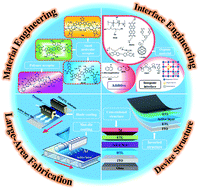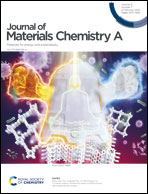Recent progress in organic solar cells based on non-fullerene acceptors: materials to devices
Abstract
Organic solar cells (OSCs) were dominated by donor–acceptor blends based on polymer donors and fullerene acceptors for nearly two decades. In the past, apprehensions about the limited efficiency of OSCs compared to other modern PV technologies had rendered them redundant. However, in the past few years, a new class of non-fullerene acceptors (NFAs) has gained prominence for OSCs owing to the significant increase in power conversion efficiency (∼2.5–18% higher than that of OSCs based on fullerene acceptors). NFAs have several advantages over their fullerene counterparts; they can be produced using facile synthesis methods and chemically manipulated to tune the morphology and electronic properties. In addition, the optical bandgap can be modified to broaden the absorption range. Herein, we review the recent advances in NFA-based OSCs and discuss the key factors enabling their fabrication, including rational design rules for donor, acceptor, and interface materials, control of the blend morphology, and engineering of the light-harvesting process and device architecture. We also provide a brief review of recent studies for increasing the stability of OSCs under various external conditions. Finally, the major challenges facing the upscaling and commercialisation of OSCs are discussed, along with the future directions for the development of OSCs.

- This article is part of the themed collections: 2023 Journal of Materials Chemistry A Lunar New Year collection and 2022 Journal of Materials Chemistry A Most Popular Articles


 Please wait while we load your content...
Please wait while we load your content...